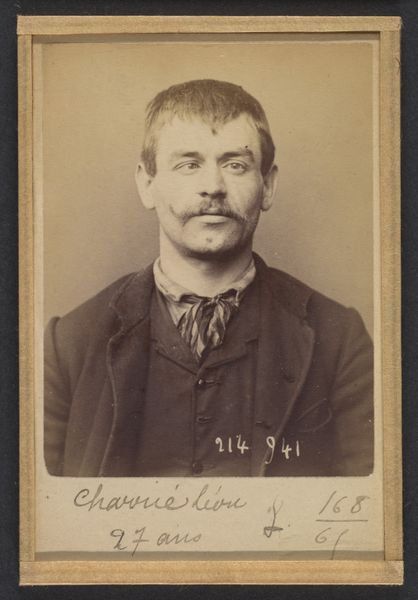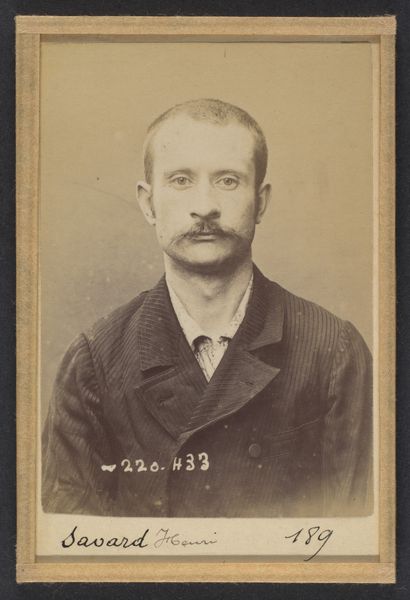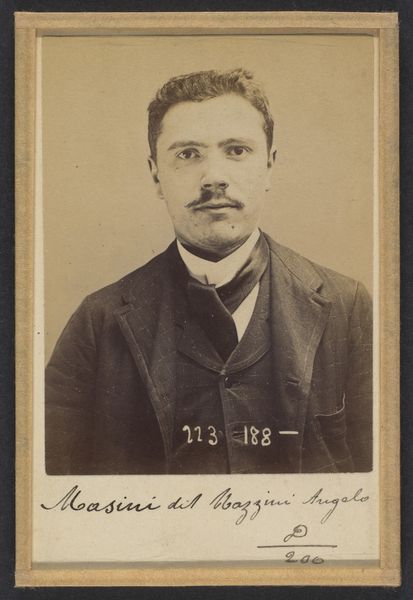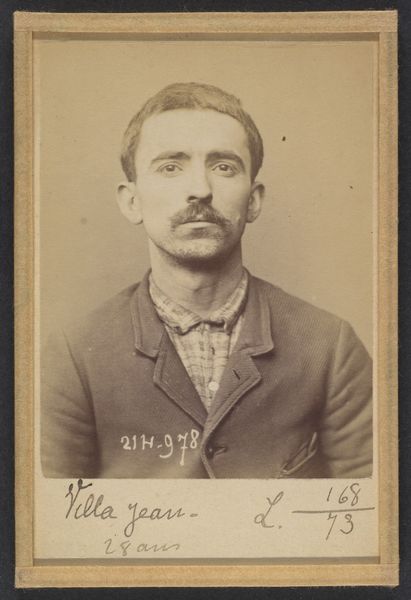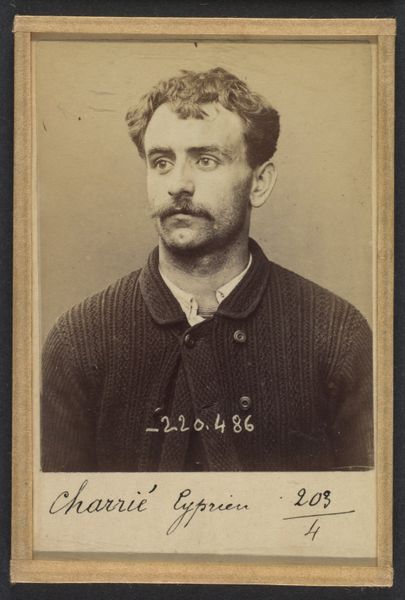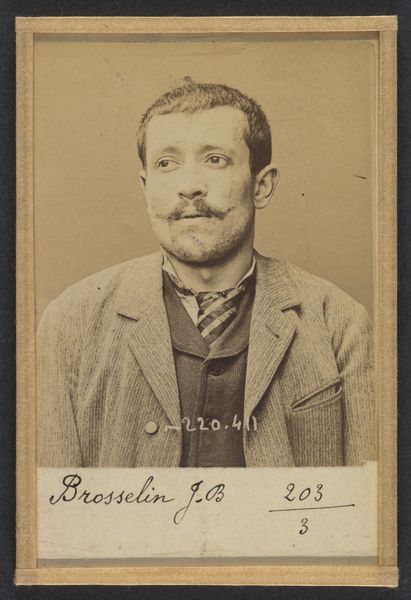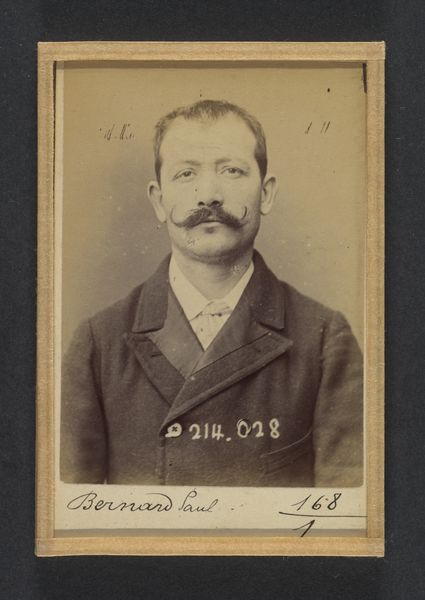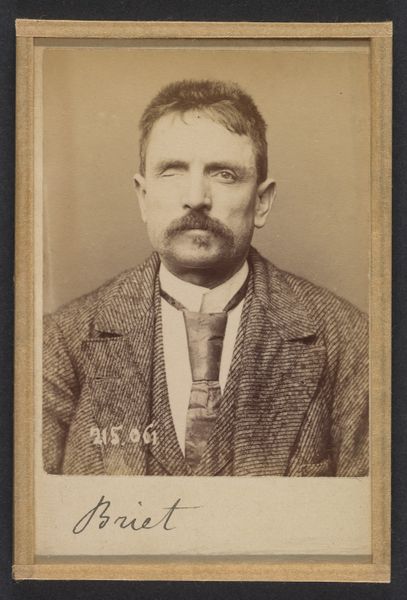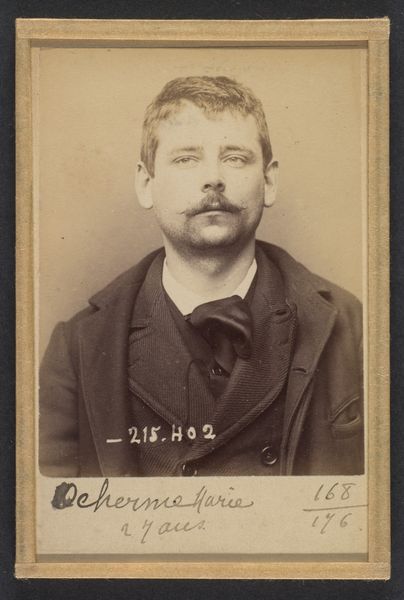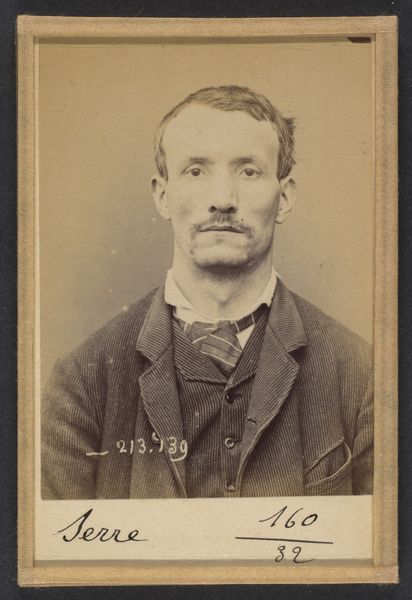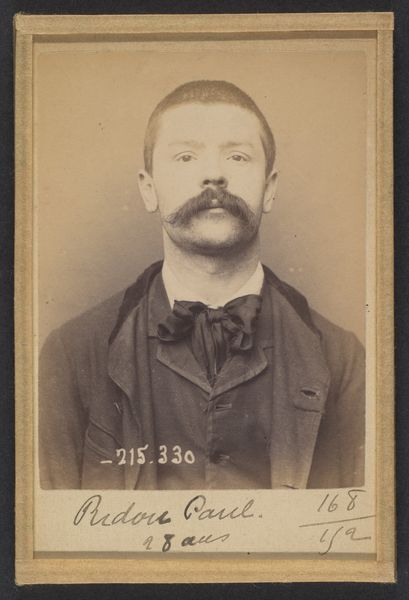
Landoin. Antoine, Eugène. 33 ans, né le 16/11/60 à Quincie (Rhône). Comptable. Anarchiste. 16/3/94. 1894
0:00
0:00
photography, gelatin-silver-print
#
portrait
#
portrait
#
photography
#
photojournalism
#
gelatin-silver-print
#
realism
Dimensions: 10.5 x 7 x 0.5 cm (4 1/8 x 2 3/4 x 3/16 in.) each
Copyright: Public Domain
This albumen print, produced in France in 1894 by Alphonse Bertillon, portrays Antoine, a 33-year-old anarchist. But what does it mean to see this portrait in a museum? Bertillon developed a system of anthropometry, or scientific measurement of the human body, for criminal identification. This "portrait parlé," or speaking likeness, was used by police to track and identify repeat offenders. The rise of photography coincided with anxieties about social order, particularly in rapidly urbanizing and industrializing European societies. Anarchism, with its critique of state power, was perceived as a threat by the establishment. Bertillon's photographs became tools for surveillance and control. By classifying and cataloging individuals, the state sought to manage perceived social risks. Historians use photographs like these, along with police records, newspapers, and other documents, to understand the social and political dynamics of the past. In this case, a mugshot prompts us to consider the relationship between art, science, and power. It reminds us that even seemingly objective images can reflect the biases and anxieties of their time.
Comments
No comments
Be the first to comment and join the conversation on the ultimate creative platform.

